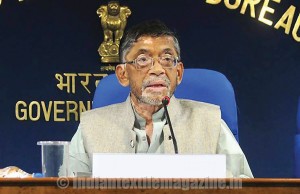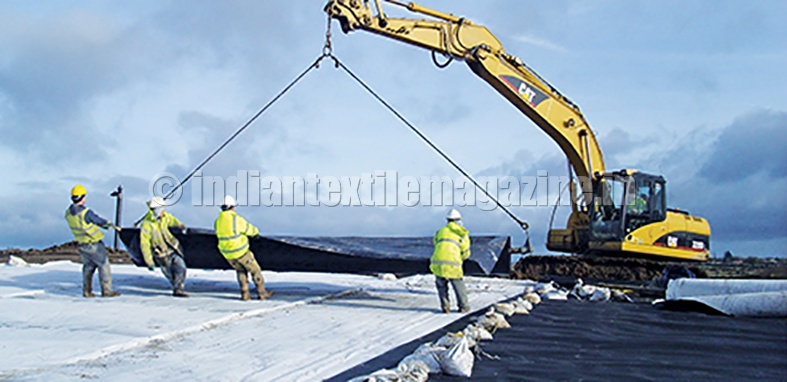The Minister of State for Textiles, Mr. Santosh Kumar Gangwar, has just launched a special scheme to promote usage of geotechnical textiles in the north-eastern region of India.
The scheme aims at demonstrating use of geotechnical textiles as a modern cost-effective technology in the development of infrastructure in fragile geological conditions of the region; improving the durability, functioning and life of infrastructure in the region, while bringing down the life cycle cost of the projects; promoting the use of geotechnical textile materials and creating a market for these products by inducing demand in infrastructure development; and at stimulating investment and development of the technical textile industry in the region and the rest of the country.
In addition, the scheme intends to develop a set of standards and specifications for the products as well as projects using these materials. It will also develop literature/manuals for inspection and testing and other aspects of construction using these materials.
The ultimate objective is to introduce modern cost-effective technology pertaining to the application and usage of geotechnical textiles in the development of infrastructure of the north-east region which is likely to boost its economy.

The scheme for promotion of geotechnical textiles in the north-east has been approved for five years, from 2014-15 to 2018-19 – with a financial outlay of Rs. 427 crores. The scheme has been formulated with active involvement of key stakeholders and the State Governments of the region, including the Manipur Government, whose State-level Coordination Committee (SLCC) has also approved two projects for road construction and four projects for water reservoirs.
India is heading towards making a significant place for itself in the global technical textiles market. Technical textiles, one of the fastest growing segments of the Indian economy, registered a compounded annual rate of growth of 11 per cent during 2007-2012. As per the estimates for 2012-2017 by the sub-group on technical textiles, the market size is expected to grow at a CAGR of 20 per cent and reach $26 billion (Rs. 1,58,540 crores) by 2016-17 from a market size of $11.6 billion (Rs. 70,151 crores) in 2012-13. The market size in the current year is projected at $18.2 billion (Rs. 1,09,659 crores).
Geotechnical textiles, a proven technology
Geotechnical textiles, a proven technology the world over, provide the functional advantages of higher endurance and durability in roads and infrastructure projects. Most of the developed countries have established empirical evidence about these advantages through numerous studies as well as onsite trials. In consideration of these benefits, geotechnical textiles have now become a way of life in the developed nations.
Countries such as the US, the UK, Germany, etc., have detailed construction codes for most of the geotechnical textile applications in roads and highways construction, with reference to material specifications and test standards.
The topography of the north-east region of India makes application of geotechnical textiles particularly suitable for the region in infrastructure projects relating to road construction and river bank and slope erosion control.
For example, the rain conditions and overflowing of the Brahmaputra river during monsoons causes a significant damage to life, property and economy of the region. The problem of landslides causes blockages in roads which at times take weeks to be resolved. The geotechnical textile technology has the potential to provide a durable and economic solution to such problems.
The north-eastern region has a total road network of 81,960 km and provides the arterial network for transportation in the absence of viable alternate modes of transport through a hilly terrain. However, road transportation is constrained both by inadequate quality and deterring climatic conditions. Road infrastructure represents the most obvious area of opportunity for the geotechnical textile segment in the region due to the direct applicability, proven technology as well as the sheer scale of projects.
As the potential for these technologies is immense and the benefits are lucrative, it is important to note that the industry stakeholders will have to play a key role in ensuring that these superior yet affordable technologies find their way onto contractor’s projects. Promotion of these technologies includes liaison between various departments and government bodies, such as the Ministry of Road Transport and Highways, Indian Road Congress and the National Highway Authority of India. The Ministry of Textiles is continuously co-ordinating with such entities to ensure that geotechnical textiles find wider acceptance and application.
The clearly high demand for effective solutions to combat the problems rendered to infrastructure in the north-east region deem it worthwhile to promote geotechnical textiles, as the traditional solutions used by the State Departments and other project authorities are not durable enough and require much more frequent maintenance compared to these modern and cost-effective technical textile solutions.
